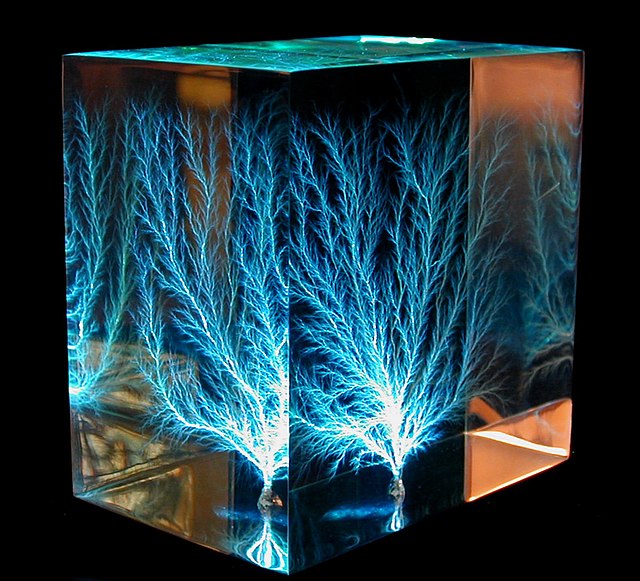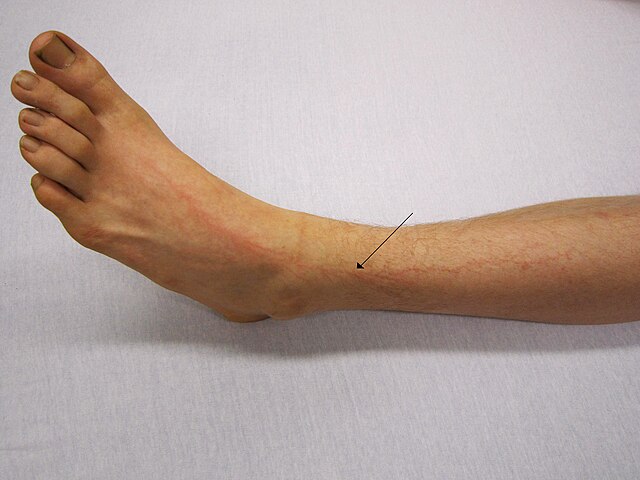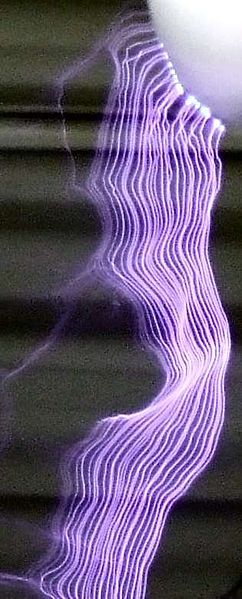A Lichtenberg figure, or Lichtenberg dust figure, is a branching electric discharge that sometimes appears on the surface or in the interior of insulating materials. Lichtenberg figures are often associated with the progressive deterioration of high voltage components and equipment. The study of planar Lichtenberg figures along insulating surfaces and 3D electrical trees within insulating materials often provides engineers with valuable insights for improving the long-term reliability of high-voltage equipment. Lichtenberg figures are now known to occur on or within solids, liquids, and gases during electrical breakdown.
Modern 3D Lichtenberg figures or "electrical treeing" in a block of clear acrylic, created by irradiating the block with an electron beam. Actual size: 80 mm × 80 mm × 50 mm (3 in × 3 in × 2 in)
Lichtenberg figures are generated by a sliding spark discharge on the flask with a mixture of gases. Structural differences between the "positive" and "negative" figures can be observed.
The slight branching redness traveling up this person's leg was created by current from a nearby lightning strike
Carbonized high-voltage discharge tracks cross the surface of a polycarbonate sheet
In electronics, electrical breakdown or dielectric breakdown is a process that occurs when an electrically insulating material, subjected to a high enough voltage, suddenly becomes a conductor and current flows through it. All insulating materials undergo breakdown when the electric field caused by an applied voltage exceeds the material's dielectric strength. The voltage at which a given insulating object becomes conductive is called its breakdown voltage and, in addition to its dielectric strength, depends on its size and shape, and the location on the object at which the voltage is applied. Under sufficient voltage, electrical breakdown can occur within solids, liquids, or gases. However, the specific breakdown mechanisms are different for each kind of dielectric medium.
Electrical breakdown in an electric discharge showing the ribbon-like plasma filaments from a Tesla coil.
A Tesla coil, showing several forms of electrical breakdown. On the right side of the aluminum high voltage terminal (top right) is a purple corona discharge. At the end of the wire projecting from the terminal (top left) is a brush discharge. The fluorescent tube lying on the stand is lit by a glow discharge induced by the radio frequency electric field. At bottom the Tesla coil apparatus is lit by an intense white light from an electric arc in a
Dielectric breakdown within a solid insulator can permanently change its appearance and properties. As shown in this Lichtenberg figure






